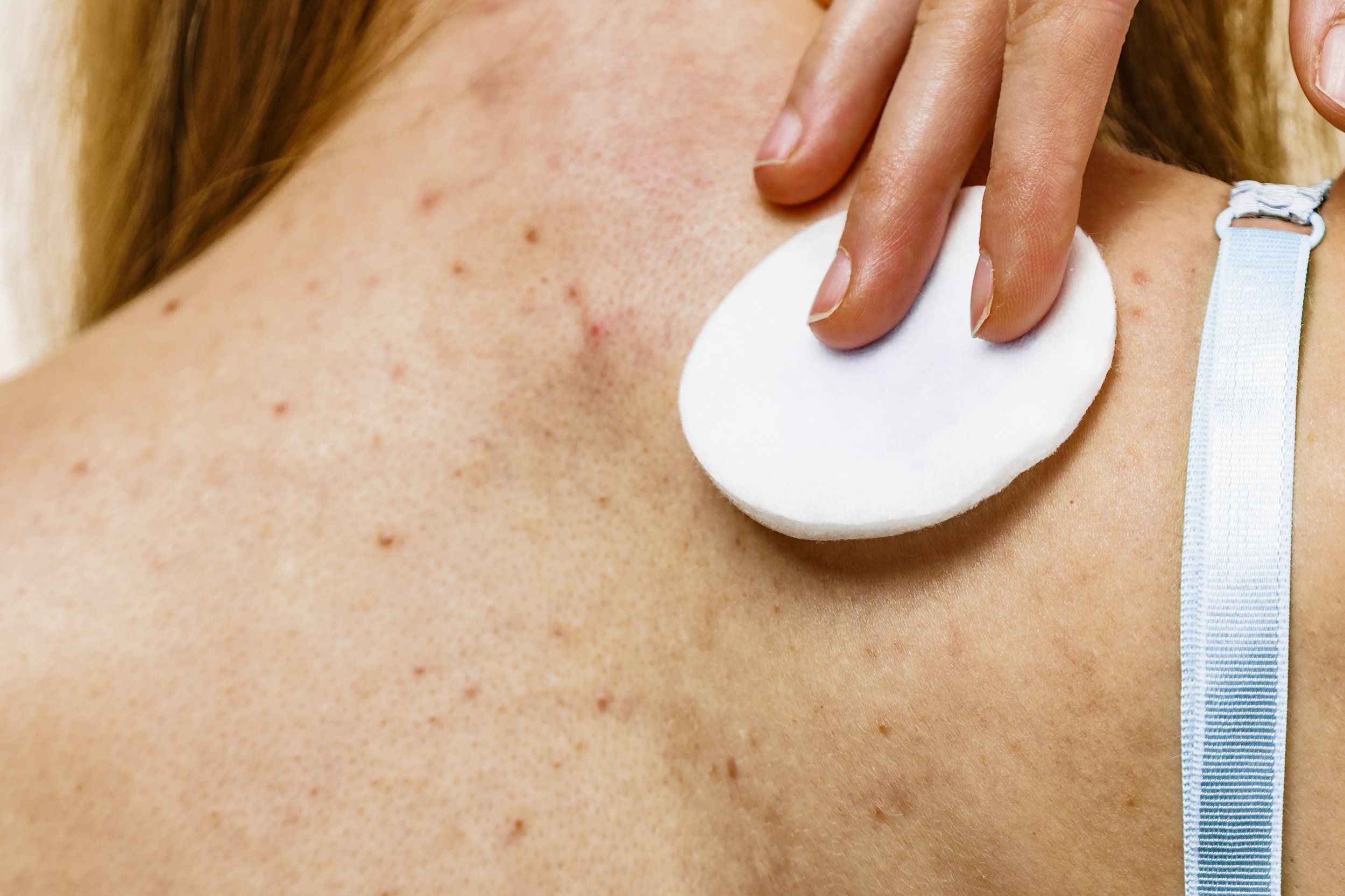Skin lesions encompass a broad range of changes in skin appearance that can occur due to various factors such as diseases, genetic predispositions, or environmental triggers. These lesions can be benign or malignant and often require careful evaluation for proper management.
Read on to learn what are skin lesions and how you can treat them.
Classification Of Skin Lesions
The main types of skin lesions are primary and secondary. Primary lesions result directly from a disease or some abnormality in the skin. They include:
Macules: These are flat areas of abnormal coloration within the skin such as freckles and flat moles.
Papules: These are tiny, raised bumps that may be caused by infection, inflammation, or a clogged pore.
Nodules: They’re bigger and deeper than papules being solid lesions that can extend into the deeper layers of skin.
Tumors: These are abnormally growing masses of tissue that can either be benign or malignant.
Vesicles: These are small fluid-filled blisters which are often as a result of viral infections like herpes or chickenpox.
On the other hand, secondary lesions will arise after progression or manipulation of primary ones. These are the following:
Scales: These could be flakes or dry patches resulting from shedding off the outermost layer of epithelium.
Crusts: These are dried serum, pus or blood left on skin after vesicle or pustule have burst.
Scars: These are permanent fibrous changes in the skin following injury and healing process.
Ulcers: These involve loss of continuity of surface epithelium involving deep open wound.
Understanding this classification is important to make accurate diagnosis and plan appropriate treatment.
Diagnosing Skin Lesions
Diagnosing skin lesions is a meticulous process combining clinical evaluation with diagnostic testing. Dermatologists start by evaluating the lesion’s size, shape, color and texture which are critical to certain conditions. Additionally, it would be essential for the doctor to know about your medical background like any past skin problems or allergies or even genetic defects that might affect your skin.
In addition, dermoscopy analysis is commonly used in such scenarios to look at tiny details that can’t be seen by the naked eye only. When there’s a suspicion of cancer, a biopsy may be done by removing tissue samples for microscopic examination to establish whether it’s a true malignancy or not. This comprehensive approach ensures accurate diagnosis as well as proper treatment regimens.
Common Treatment Options
Treatment for skin lesions varies depending on the type and cause. Options can range from topical medications and oral treatments to more invasive procedures. In cases where lesions are suspected to be cancerous or if they pose aesthetic concerns, surgical options may be considered.
Among the effective surgical techniques is electrodessication and curettage, a procedure involving electrical current to remove the affected tissue, then scraping away the lesion with a curette. In this case, consulting an experienced dermatologist is essential. They can provide specialized care tailored to your condition, ensuring the most effective treatment plan is implemented.
However, for comprehensive skin health management, working with providers like the Center for Surgical Dermatology can be an excellent option. They offer a range of services, from diagnostics to advanced treatment options.
Advanced Treatment Methods
In addition to the usual medications, lasers, and freezing are being used in modern dermatology to address skin lesions. With high-intensity light, lasers target only the part with the disease and thus cause less harm to healthy skin. They can be effective in removing cosmetic lesions or certain types of cancers that happen on the skin itself.
Another alternative is cryotherapy NZ, which uses cold temperatures like liquid nitrogen to freeze unwanted tissue. Most commonly, this treatment is used for warts, precancerous spots, and other benign growths. These two treatments are popular for their exactness and low invasiveness, which helps reduce recovery time with minimal scarring risk.
Preventing And Managing Skin Lesions
It may not be possible to prevent all skin lesions. However, knowing the risk factors and following protective measures can minimize their occurrence. Regularly utilizing sunscreen lotions, wearing protective clothing, and avoiding too much exposure to sunlight can help prevent UV rays caused by skin damage.
On the other hand, controlling the primary illness (like diabetes) reduces this possibility, particularly for cases involving infection-related tumors, e.g., cellulitis. You should also go for regular checkups with a dermatologist, especially when you’ve previously suffered from either skin cancer or other forms of skin diseases.
Conclusion
Understanding skin lesions is crucial for effective management and treatment. With various types and causes, these lesions can be indicators of underlying health conditions. By taking preventive measures and consulting with dermatology specialists, you can ensure you receive the best care for maintaining skin health and appearance.














